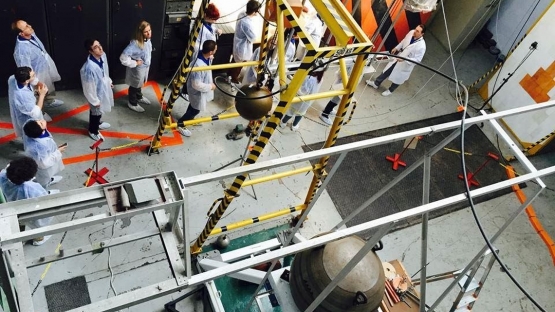Knowledgeable and motivated young professionals are key to the long-term sustainability of the nuclear industry. This is why an IAEA-supported pilot initiative took 22 young nuclear engineers and scientists from across Europe to provide them with hands-on experience and mentoring at nuclear installations in the Czech Republic and the United States. Some of them had never seen a nuclear reactor before. And even those who have, gained a broader prospective.
“It is always helpful when I can visit nuclear power plants and reactors of which I have studied only at university,” said Anita Kirilova, 28, a newly recruited inspector at the Bulgarian Nuclear Regulatory Agency.
The Intercontinental Nuclear Institute (INI), a four-week, joint programme by the U.S.-Czech Civil Nuclear Cooperation Centre (CNCC) in Prague and the University of Massachusetts-Lowell (UML) in the United States, provided fellows from 13 countries with information about a sustainable nuclear power programme based on the highest level of safety and security, the long-term needs for nuclear power in the energy mix of a country, best practices in design and operation, and long-term availability of the necessary resources, including human resources. Fellows also learned about the importance of non-proliferation and — thanks to the cross-Atlantic nature of the programme — could familiarize themselves with different types of technologies.
“INI brought together the best experience, technology, culture and education from European and United States teams to train the workforce of the future,” said Sukesh Aghara, INI Director at UML.
The programme is the result of a thorough gap analysis, said Radek Škoda, INI Director from the CNCC. “INI was designed with a special focus on combining classroom learning with practical experience,” he said. “Fellows had the opportunity to learn from leading experts from industry, research and technology organizations and universities, introducing them to physical facilities and activities.” The fellows also visited the Harvard Kennedy School’s Belfer Center, and gained a good understanding of the New England grid system operator control centre in Holyoke, as well as information on the integrated approaches to electrical systems that are used at nuclear power plants.
I particularly appreciated the combination of practical experience and making professional contacts.






